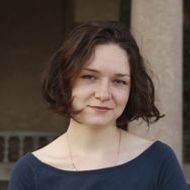HSE Researchers Uncover Causes of Gender Pay Gap among Recent University Graduates in Russia

A study conducted at HSE University shows that despite having the same education and similar starting conditions, the pay gap between male and female recent graduates can be as high as 22%. This is partly because female students often choose less lucrative fields and also because they tend to seek jobs in sectors that offer lower pay but are perceived to have more stable and safer working conditions.
The study included more than 400,000 early-career professionals and was based on data from the nationwide Monitoring Graduate Employment database, which contains details on graduates' education and subsequent employment. The study focuses on 2021 graduates and examines their career outcomes in 2022. The authors emphasise that this is not survey data, but an administrative dataset encompassing all graduates in the country.
The researchers found that women with the same educational characteristics earn 22% less than their male counterparts a year and a half after graduation. 'This disparity is not related to their abilities but rather to systemic factors,' according to Natalya Yemelina, co-author of the study and Senior Research Fellow at the Laboratory for Labour Market Studies of the HSE Faculty of Economic Sciences.
One of these systemic factors is that many young women still predominantly choose 'female' fields of study in the humanities and social sciences, as well as careers in education and medicine, where salaries are traditionally lower than those in engineering or IT, which are more commonly chosen by men.
Thus, over 50% of male graduates have studied engineering and technology, while nearly half of female graduates have chosen economics, law, and social sciences, where the starting salaries for graduates are, on average, 30% lower than in technology-related occupations.
'Although an increasing number of women have been choosing technology-related fields in recent years, a significant portion still prefers areas where salaries are lower. This affects their starting employment and earnings,' according to Ksenia Rozhkova, co-author of the article and Junior Research Fellow at the Laboratory for Labour Market Studies of the Faculty of Economic Sciences.
Such educational segregation accounts for one-third of the explained pay gap. Job characteristics such as industry, field of occupation, and company size appear to play a more significant role. Male graduates are more likely to secure jobs in high-paying industries such as mining and IT, where salaries in 2022 exceeded 80,000 roubles per month. In contrast, women tend to focus on sectors with lower earnings, such as education, healthcare, and administration, where salaries rarely exceed 50,000 roubles.
Another notable finding concerns the role of academic achievement. Women are more likely than men to graduate with honours, reflecting a high level of training attained. However, this does not necessarily result in tangible benefits. While graduating with honours increases employability, it does not guarantee women the same high salaries as their male counterparts.

The reasons for this gap may be linked to unobservable factors such as differences in working hours, career interruptions due to family obligations, and potential discrimination by employers.
In another article, the authors provide an even more detailed analysis, for the first time evaluating the dynamics of early-career gender inequality based on data from 2018 graduates. Despite the absence of family obligations or significant differences in work experience between men and women, a gender pay gap of 14% is observed in the first six months of their entry into the labour market. Within four years of graduation, the pay gap nearly doubles. While initially, right after graduation, 85% of the pay gap can be attributed to objective differences in education and work characteristics, a few years later, most of the gap remains unexplained. The largest gap is observed among the highest-paid professionals, indicating the presence of a glass ceiling effect from the very start of graduates' careers in the Russian labour market.
'The rapidly expanding early-career gender pay gap indicates that education policies may have limited ability to effectively address gender inequality in the labour market. The expectation that the pay gap can be minimised solely by reducing educational segregation is unfounded,' according to Sergey Roshchin, co-author of the study and Head of the Laboratory for Labour Market Studies at the HSE Faculty of Economic Sciences.
See also:
Habits Stem from Childhood: School Years Found to Shape Leisure Preferences in Adulthood
Moving to a big city does not necessarily lead to dramatic changes in daily habits. A study conducted at HSE University found that leisure preferences in adulthood are largely shaped during childhood and are influenced by where individuals spent their school years. This conclusion was drawn by Sergey Korotaev, Research Fellow at the HSE Faculty of Economic Sciences, from analysing the leisure habits of more than 5,000 Russians.
Russian Scientists Reconstruct Dynamics of Brain Neuron Model Using Neural Network
Researchers from HSE University in Nizhny Novgorod have shown that a neural network can reconstruct the dynamics of a brain neuron model using just a single set of measurements, such as recordings of its electrical activity. The developed neural network was trained to reconstruct the system's full dynamics and predict its behaviour under changing conditions. This method enables the investigation of complex biological processes, even when not all necessary measurements are available. The study has been published in Chaos, Solitons & Fractals.
Scientists Propose Novel Theory on Origin of Genetic Code
Alan Herbert, Scientific Supervisor of the HSE International Laboratory of Bioinformatics, has put forward a new explanation for one of biology's enduring mysteries—the origin of the genetic code. According to his publication in Biology Letters, the contemporary genetic code may have originated from self-organising molecular complexes known as ‘tinkers.’ The author presents this novel hypothesis based on an analysis of secondary DNA structures using the AlphaFold 3 neural network.
See, Feel, and Understand: HSE Researchers to Explore Mechanisms of Movement Perception in Autism
Scientists at the HSE Cognitive Health and Intelligence Centre have won a grant from the Russian Science Foundation (RSF) to investigate the mechanisms of visual motion perception in autism. The researchers will design an experimental paradigm to explore the relationship between visual attention and motor skills in individuals with autism spectrum disorders. This will provide insight into the neurocognitive mechanisms underlying social interaction difficulties in autism and help identify strategies for compensating for them.
Scholars Disprove Existence of ‘Crisis of Trust’ in Science
An international team of researchers, including specialists from HSE University, has conducted a large-scale survey in 68 countries on the subject of trust in science. In most countries, people continue to highly value the work of scientists and want to see them take a more active role in public life. The results have been published in Nature Human Behaviour.
Education System Reforms Led to Better University Performance, HSE Researchers Find
A study by researchers at the HSE Faculty of Economic Sciences and the Institute of Education have found that the number of academic papers published by research universities in international journals has tripled in the past eight years. Additionally, universities have developed more distinct specialisations. Thus, sectoral universities specialising in medical, pedagogical, technical, and other fields are twice as likely to admit students to target places. The study has been published in Vocation, Technology & Education.
Scientists Record GRB 221009A, the Brightest Gamma-Ray Burst in Cosmic History
A team of scientists from 17 countries, including physicists from HSE University, analysed early photometric and spectroscopic data of GRB 221009A, the brightest gamma-ray burst ever recorded. The data was obtained at the Sayan Observatory one hour and 15 minutes after the emission was registered. The researchers detected photons with an energy of 18 teraelectronvolts (TeV). Theoretically, such high-energy particles should not reach Earth, but data analysis has confirmed that they can. The results challenge the theory of gamma radiation absorption and may point to unknown physical processes. The study has been published in Astronomy & Astrophysics.
Chemists Simplify Synthesis of Drugs Involving Amide Groups
Chemists from HSE University and the Nesmeyanov Institute of Organoelement Compounds of the Russian Academy of Sciences (INEOS RAS) have developed a new method for synthesising amides, essential compounds in drug production. Using a ruthenium catalyst and carbon monoxide under precisely controlled reaction conditions, they successfully obtained the target product without by-products or complex purification steps. The method has already been tested for synthesising a key component of Vorinostat, a drug used to treat T-cell lymphoma. This approach could lower the cost of the drug by orders of magnitude. The paper has been published in the Journal of Catalysis. The study was supported by the Russian Science Foundation.
Scientists Examine Neurobiology of Pragmatic Reasoning
An international team including scientists from HSE University has investigated the brain's ability to comprehend hidden meanings in spoken messages. Using fMRI, the researchers found that unambiguous meanings activate brain regions involved in decision-making, whereas processing complex and ambiguous utterances engages regions responsible for analysing context and the speaker's intentions. The more complex the task, the greater the interaction between these regions, enabling the brain to decipher the meaning. The study has been published in NeuroImage.
Scientists Present New Solution to Imbalanced Learning Problem
Specialists at the HSE Faculty of Computer Science and Sber AI Lab have developed a geometric oversampling technique known as Simplicial SMOTE. Tests on various datasets have shown that it significantly improves classification performance. This technique is particularly valuable in scenarios where rare cases are crucial, such as fraud detection or the diagnosis of rare diseases. The study's results are available on ArXiv.org, an open-access archive, and will be presented at the International Conference on Knowledge Discovery and Data Mining (KDD) in summer 2025 in Toronto, Canada.





